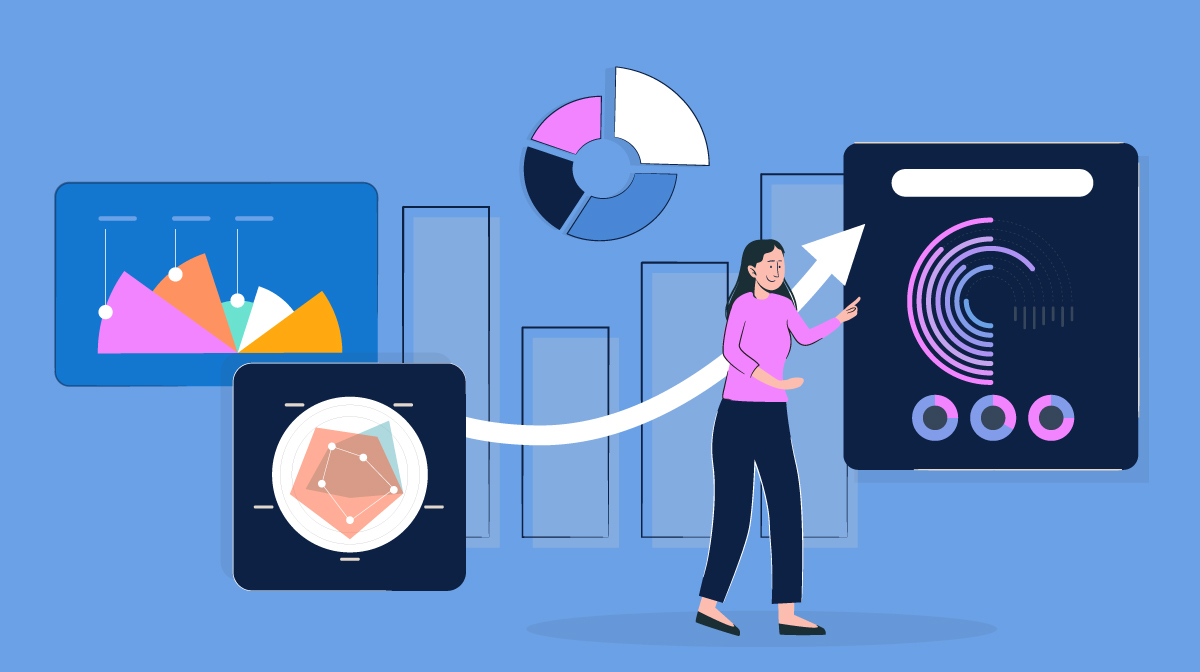Data is beautiful – it can inspire, improve lives and bring out the best in people. To keep you inspired, we’ve gathered the best data visualizations of 2023.
The chosen works cover a variety of topics from Covid-19 healthcare to environmental issue statistics and futuristic LIDAR data graphs.
With over 4.54 billion people using the Internet in 2020, we’re sure to witness even more amazing data visualizations next year. For now, get ready to dive into 2023’s best data visualizations.. Enjoy your flight of imagination!
But first, check out other top data visualizations in our previous collections from 2018 and 2019.
Quick Read
NASA's Eyes on Asteroids is a good data visualization example that provides a great user experience. The design is simple and intuitive, making it easy for users to navigate the site and find what they're looking for.
The History of Pandemics is an infographic that presents a visual timeline of every known pandemic and includes information on how many people were affected, where it spread and what caused it.
Void of the Memories is the rarest data visualization on this list. It's a great combination of calligraphy and data visualization that tells the story of human memory and experience.
The search for dark matter is one of the most important scientific questions in physics today, and this infographic, “The Search for Dark Matter,” serves as a great introduction to the subject.
Enhance your data storytelling skills and creatively showcase your data by signing up for Visme's data visualization tools.1 Nasa’s Eyes on Asteroids
If you are interested in exploring data visualization topics in space exploration, check out this striking data visualization created by NASA.
NASA’s Eyes on Asteroids is one of the best data visualizations due to its exceptional design and functionality. This interactive visualization allows users to explore the asteroid belt and see the real-time positions of asteroids in our solar system.
The design of this visualization is highly engaging and visually stunning, with a sleek and modern interface that is easy to use. The visualization features a 3D solar system model, allowing users to zoom in and out to explore asteroids and other celestial bodies.
One of the key features of NASA’s Eyes on Asteroids visualization is its real-time data feed, which provides up-to-date information on the positions and trajectories of asteroids. This feature makes the visualization highly informative and relevant to current events, allowing users to track potentially hazardous asteroids and see their projected paths over time.
2 Selfiecity – The Science of Selfies
A data visualization exploring the science of selfies
elfiecity is an innovative and engaging data visualization project exploring the selfies world. It uses a variety of visualizations to analyze selfies from five cities around the world.
They collected over 120,000 selfies from the five cities and selected nearly 1,000 photos from each town. After collecting the images, they analyzed various metrics such as demographics, poses, moods and features.
The project then revealed exciting insights into the culture and social behavior of the people who take selfies. For example, the project shows that women take more selfies than men and that people tend to take selfies in public places rather than private spaces.
The study was quite complex and yielded valuable insights, which presented a challenge when it came to sharing the results. However, the team did an excellent job creating visually appealing data visualizations to present the information.
3 The Ancient Seven Wonders of the World
The civil engineering feats of humankind have reached the highest peaks of the mountains and deep into the ocean, and we have built pyramids, temples and statues that are still standing today.
The seven wonders of the ancient world are a collection of man-made structures that are considered to be remarkable feats at the time they were built.
Pranav Gavali, a Data Scientist, created this graphic using data from Encyclopedia Britannica and Wikipedia to visualize the world’s seven ancient wonders along with their features and modern-day locations.
The graphic perfectly illustrates how the seven wonders were built and why they are considered a wonder of the world. The Great Pyramid of Giza is the only one of the seven wonders that still stands today.
4 The World’s Population at 8 Billion
On November 15, 2022, the world’s population reached 8 billion. This is the first time in history that there have been this many people on Earth. And there can’t be a more straightforward and visually appealing way to present this data than this visualization.
What makes this big data visualization stand out is its simplicity and effectiveness in conveying the message. Using a circle to represent the earth is a powerful symbol that makes the visualization easy to understand and remember.
By using colors to represent continents and lines to separate countries, the visualization effectively conveys the complexity of the world’s population in a simple and visually appealing way.
5 The Top 10 Largest Nuclear Explosions
This is a prime example of how creative design can bring data to life. It uses a unique approach, similar to an infographic, to showcase the impact and size of the largest nuclear explosions ever detonated.
It features a series of explosion image examples that help visualize each explosion’s scale and impact. The use of images effectively conveys the destructive power of each blast in a way that is easy to understand and remember.
The data is presented clearly and concisely, with each explosion listed along with its country of origin.
